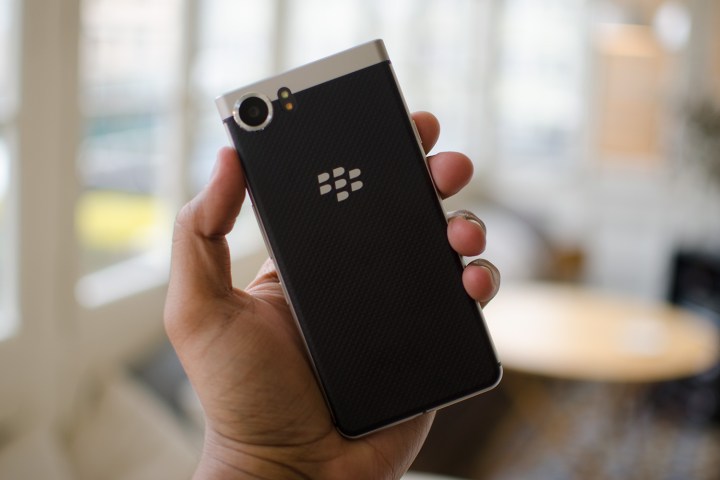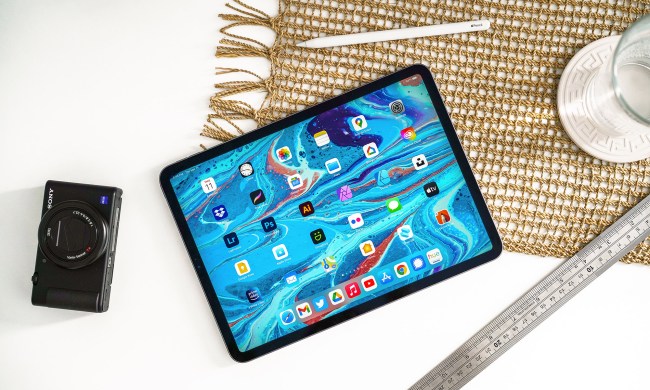I haven’t seen anyone use a BlackBerry since my freshman year of high school. In fact, I thought the BlackBerry had already died by the time everyone got their hands on the iPhone and/or an Android smartphone in 2011 and I was shocked to learn that the minuscule PDA-like device was still around last month when the company that shares its name decommissioned calling and messaging services for the classic models and rendered them useless. Its death was confirmed when OnwardMobility lost the rights to the BlackBerry name despite its attempts to resurrect the brand with the BlackBerry 5G, which suffered multiple delays in 2021.
Despite being one of the most popular mobile devices in the 2000s next to the T-Mobile-exclusive Sidekick, BlackBerry didn’t survive the smartphone era, even though it triggered the advent of smartphones starting with the iPhone. Given its PDA-esque design, it wasn’t suitable enough to be turned into a smartphone — or, at the very least, the culturally accepted definition of a smartphone: All touchscreen, no physical QWERTY keyboard. Because of its failure to adapt to the growing smartphone market dominated solely by touchscreens, not to mention the lack of updates for the newer, surviving models — like the BlackBerry Key2 — the BlackBerry as a device is better off dead for all intents and purposes.
The rise and fall of the BlackBerry
The BlackBerry was born as a two-way pager in 1996, created by Research In Motion (RIM) on a contract with Canadian telecommunications company Rogers. It was designed to send emails and other messages wirelessly, which was considered an innovation at the time. In 2002, the BlackBerry evolved from a pager to a cellphone, adding a keyboard to boot. Over the next few years, RIM gradually added more features to make it look like cellphones from its rivals, such as a color display, Wi-Fi, and a built-in camera. But it still looked so much like a PDA that it appealed more to business professionals and other wealthy people than those in lower-income brackets, making it a status symbol.

By 2007, BlackBerry extended its reach from business professionals and other privileged people (even then-President Barack Obama) to high school students, giving everybody the ability to do things they normally needed a computer to do, such as answering emails and surfing the internet. Aside from MySpace and Facebook, social media wasn’t around at that time, but people were so hooked on the idea of being connected 24/7 through their BlackBerry — especially with its Instant Messaging feature, called BlackBerry Messenger — that the phone earned the nickname “CrackBerry.”
That addiction drove the phone’s profits through the roof, grossing RIM over $3 billion in revenue with a net income of over $631 million. By the end of the decade, BlackBerry dominated 43% of the smartphone market in the U.S., with 20% on the global scale, and selling over 50 million BlackBerries a year, according to The Guardian.
When Apple came out with the iPhone, it started to make a run for BlackBerry’s money. Although businesspeople remained loyal to the keyboard-laden phone, the BlackBerry eventually went out of style due to its struggle to compete with the uber-popular iPhone and Android touchscreen smartphones.
Failed touchscreen experiments

In 2008, in an effort to keep up with the ever-changing mobile industry, RIM released its very first touchscreen phone called the BlackBerry Storm. According to the 2015 book Losing the Signal: The Untold Story Behind the Extraordinary Rise and Spectacular Fall of Blackberry (via BGR), the Storm sold well at first because the BlackBerry brand was still strong enough and Verizon developed a heavy marketing campaign to counter the then-AT&T exclusive iPhone. But things quickly cratered once people started using the phone. John Stratton, then Verizon’s chief marketing officer, told RIM’s then-CEO Jim Balsillie that “every one of the 1 million Storm phones … needed replacing,” but the replacements were being returned just as fast. The Storm turned out to be a disaster because its performance was sluggish and it was riddled with bugs — so much so that Stratton wanted RIM to pay Verizon nearly $500 million to cover its losses.
Three years later, RIM developed its first mini-tablet, called the BlackBerry Playbook. However, the tablet was missing the email app, which made it completely useless in the eyes of business-minded customers.
In 2013, after RIM changed its name to BlackBerry, it finally pulled itself together and released the all-touchscreen BlackBerry 10. Unfortunately, it came at the worst possible time. The iPhone and Android touchscreen phones had taken over so much of the smartphone market that BlackBerry’s global market share plummeted to less than 1% by 2017.
Slow and steady loses the race
OnwardMobility’s attempt to bring the BlackBerry back from the dead is a nice gesture from a nostalgic lens. Unfortunately, its efforts to do so proved to be futile. BlackBerry may have been the king of the smartphone industry in the early aughts, but it could never catch up to Android and Apple smartphones. When the company finally eliminated the physical keyboard on the BlackBerry 10, the mobile industry and its consumers were already deeply in love with their iPhones and Samsung Galaxy smartphones. It was just too little, too late.
“Slow and steady wins the race” may have been the moral of The Tortoise and the Hare, but in the case of BlackBerry and its reluctance to create a full-touchscreen BlackBerry phone, slow and steady loses the race. Therefore, BlackBerry should stay dead.



